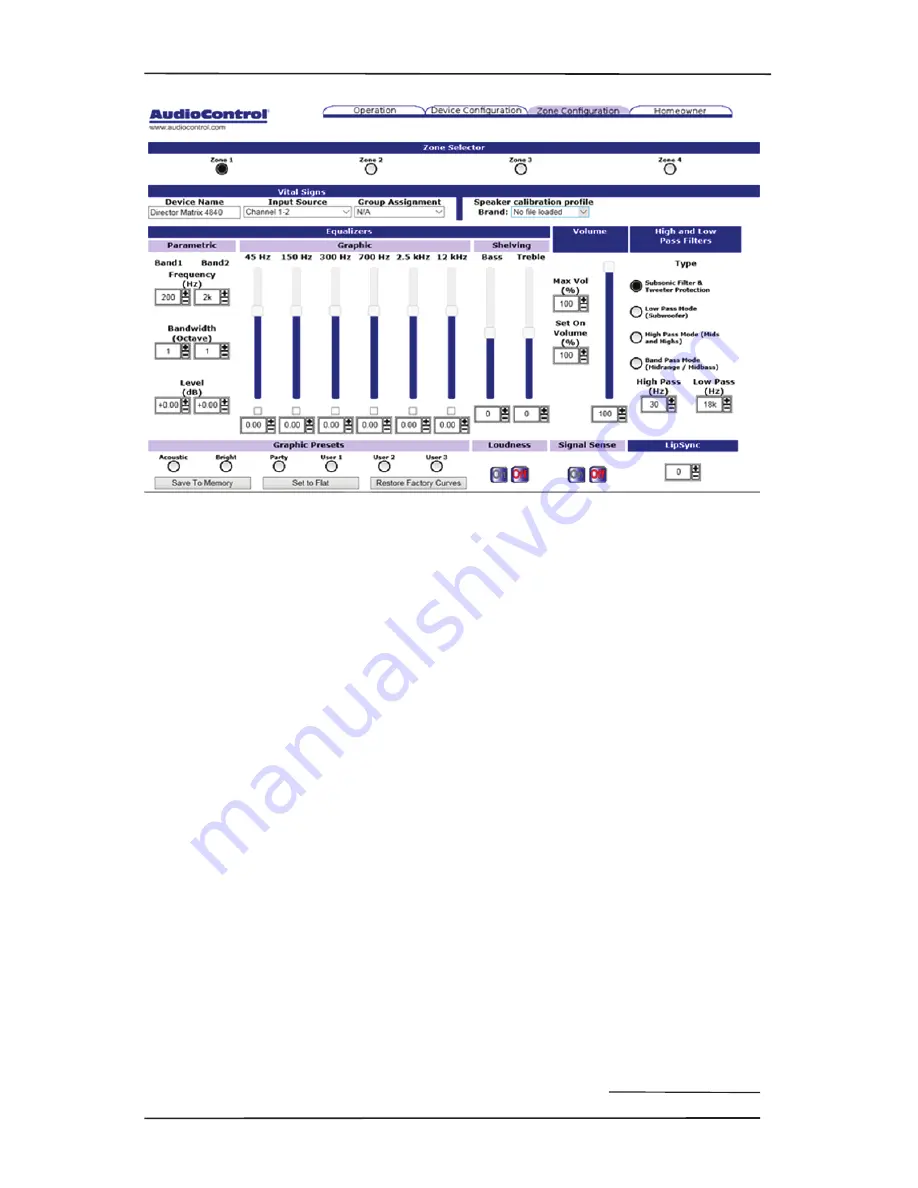
29
Installation Manual
Model M4840
THE DIRECTOR
®
Signal Processing Tab
We will be expanding our speaker
partners in the future, please watch
our website for the latest information.
Graphic EQ:
Adjustment of the graphic
EQ of the selected zone is done by
dragging the EQ sliders to the desired
position, or by clicking where you want
the position/ value to be, or by clicking
the +/- buttons. Note that the sliders
can be moved down as well as up, and
this is not a sign of weakness.
Parametric EQ:
In addition (or sub-
traction) to the graphic EQ sliders,
there are two separate parametric
equalizers per zone, for the ultimate
in room-acoustics problem solving
(or problem creating). Each para
-
metric EQ has adjustments for the
frequency, width, and the level boost
or cut. For an example of their use, if a
certain frequency sets all the teacups
rattling in an old folk’s home, a
narrow-width filter can be tried at the
teacup-rattling-onset-frequency, with
a cut in the level.
Shelving EQ:
Just when you would be
forgiven for thinking “wow, that’s a lot
of EQ flexibility,” wait.. there’s more.
At no extra charge, two sliders offer
bass and treble EQ adjustment of
the shelving kind. Shelving EQ, used
in combination with the graphic EQ
and parametric EQ, gives you the fine
opportunity to upset things royally, or
to be the better person, with kindness
and EQ moderation for all. Start with
the graphic EQ flat, apply a bit of
shelving bass or treble EQ, and see
how that sounds. Maybe that will do.
Volume:
The volume slider, as the name
suggests, was designed to hypnotize
little kittens that might be watching
the little rectangle go up and down
on your screen. The effect is quite
adorable. The slider can also be used
to set the volume in the zone. One
extra adjustment allows you to set the
maximum-allowable volume per zone,
such as teenager’s rooms, and one
adjustment sets the turn-on volume
level.
















































